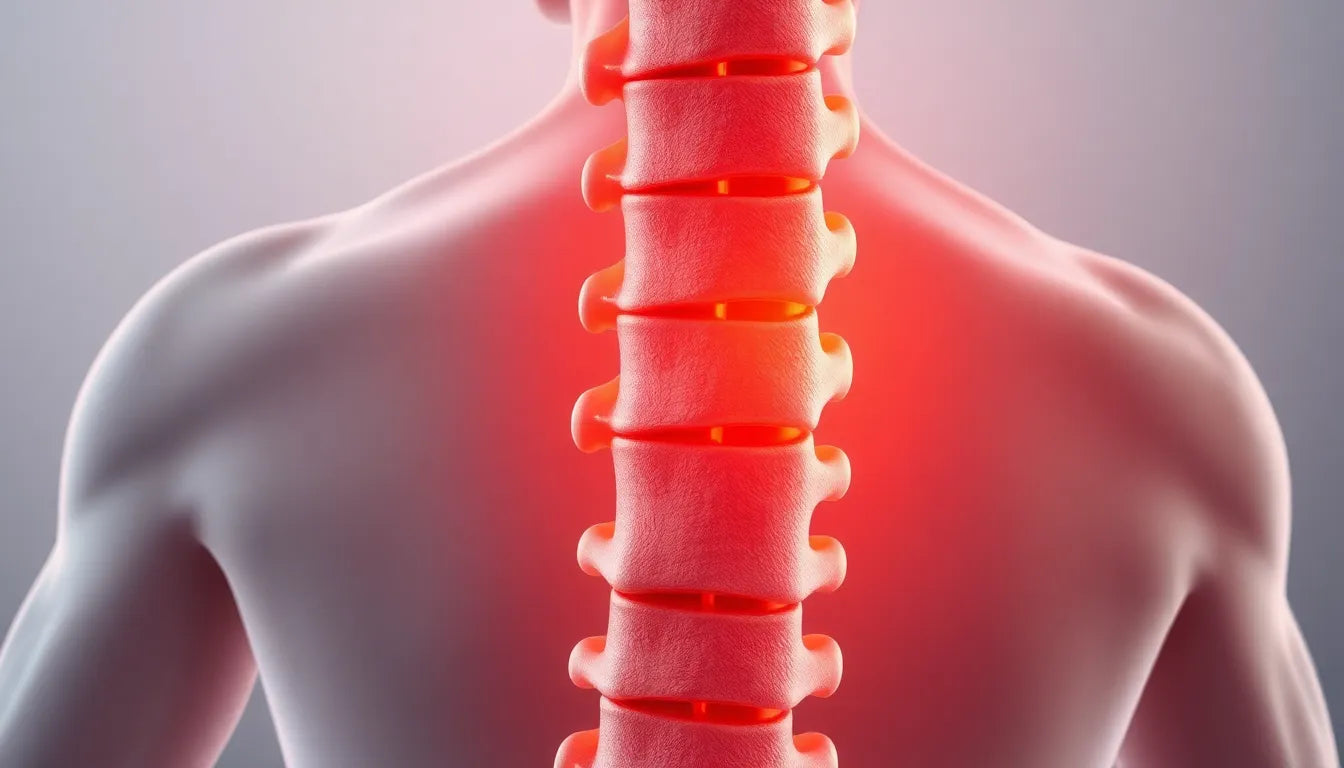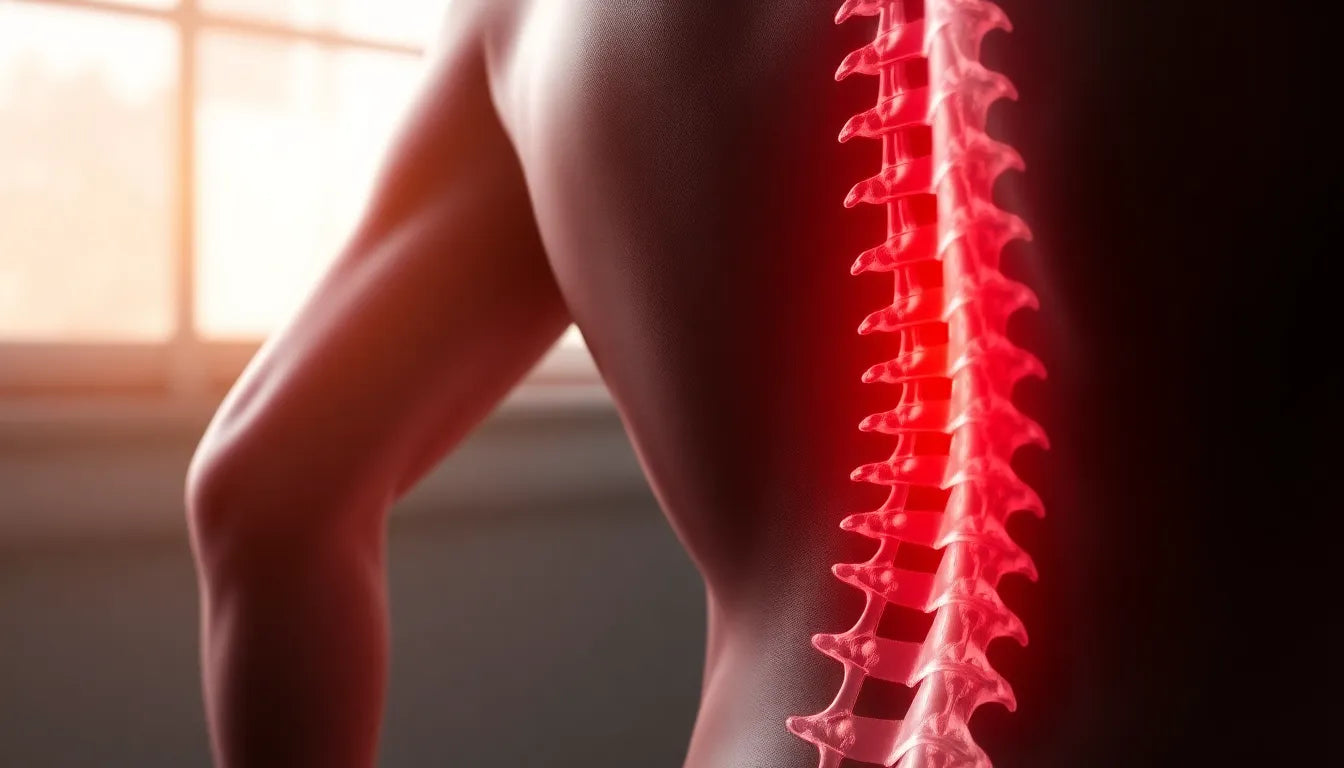Sciatica pain is a common yet often misunderstood condition that can significantly disrupt daily life. Many people experience its effects without fully understanding what it is or how it manifests. Recognizing the symptoms early is crucial in managing the condition effectively and minimizing its impact on your day-to-day activities.
Understanding the sciatic nerve
The sciatic nerve is the largest nerve in the human body, running from the lower back down through the hips, buttocks, and each leg. Its primary function is to connect the spinal cord with the muscles of the leg and foot, enabling movement and sensation. When this nerve becomes irritated or compressed, it can lead to sciatica, characterized by pain that radiates along its path.
The prevalence of sciatica
Sciatica affects a significant portion of the population, with estimates suggesting that up to 40% of people will experience it at some point in their lives. Despite its prevalence, awareness of sciatica and its symptoms remains low, leading many to endure unnecessary discomfort. Early detection and intervention can prevent the condition from worsening and improve quality of life.
Purpose of this post
The goal of this post is to educate readers about the symptoms of sciatica pain, helping them to identify and understand these signs early. By recognizing these symptoms, individuals can seek appropriate care and potentially alleviate the discomfort associated with this condition. Whether you're experiencing mild discomfort or more severe pain, understanding the symptoms of sciatica is the first step towards finding relief.
Key symptoms of sciatica pain
Recognizing the symptoms of sciatica pain is crucial for early intervention and effective management. One of the hallmark signs of sciatica is radiating pain. This pain typically originates in the lower back or buttock and travels down one leg, following the pathway of the sciatic nerve. This radiating pattern is a key indicator that differentiates sciatica from other types of back pain.
Pain quality and location specifics
The quality of sciatica pain can vary widely among individuals. It may manifest as a mild ache, a sharp or burning sensation, or even feel like an electric shock or shooting pain. These sensations often affect only one side of the body, extending from the lower back through the buttock, down the thigh, leg, and sometimes reaching the foot or toes. This unilateral pain pattern is characteristic of sciatica and helps in distinguishing it from other conditions.
Activities that worsen sciatica symptoms
Understanding what exacerbates sciatica symptoms can aid in managing the condition. Activities such as sitting for prolonged periods, bending, twisting, lifting heavy objects, or even sudden movements like coughing or sneezing can intensify the pain. Being mindful of these triggers can help individuals modify their daily activities to reduce discomfort.
Additional symptoms of sciatica
In addition to pain, sciatica can present with several other symptoms that affect sensory and motor functions. Sensory symptoms often include tingling or a pins-and-needles sensation, and numbness, particularly in the areas served by the sciatic nerve. These sensations are commonly experienced in the leg or foot, contributing to discomfort and affecting mobility.
Motor symptoms and red flags
Motor symptoms associated with sciatica can include muscle weakness or a feeling of heaviness in the leg or foot. This can lead to difficulty in moving the leg, foot, or toes. In severe cases, individuals may experience "foot drop," a condition where lifting the front part of the foot becomes challenging, affecting walking.
It's important to be aware of red flag symptoms that necessitate urgent medical attention. These include a sudden loss of bladder or bowel control, significant weakness, or numbness in the perineal region, often referred to as the "saddle" area. Such symptoms could indicate a more serious underlying condition requiring immediate evaluation.
By understanding the range of symptoms associated with sciatica, individuals can better identify the condition and seek appropriate medical advice. Early recognition and management can significantly improve the quality of life and prevent the progression of symptoms. In the next section, we will explore how sciatica impacts daily activities and address common questions about its progression and management.
Functional impact of sciatica pain
Sciatica pain can significantly influence daily activities, making simple tasks challenging. Individuals often describe the sensation as a "zap of electricity" or "pins and needles" that disrupts their ability to walk, stand, or sit comfortably. For instance, sitting for extended periods, such as during a long car ride or a day at the office, can exacerbate symptoms, leading to increased discomfort and difficulty concentrating. Similarly, standing for long durations or engaging in physical activities can intensify the pain, requiring frequent breaks or adjustments to posture to alleviate the discomfort. Understanding these functional impacts is crucial for managing the condition effectively.
Symptom progression and management
The progression of sciatica symptoms can vary widely among individuals. Initially, symptoms might start as a mild ache or discomfort in the lower back, gradually intensifying and radiating down the leg. Over time, without intervention, these symptoms can worsen, leading to more severe pain and potential complications such as muscle weakness. However, with appropriate management, symptoms can also resolve or significantly improve. Implementing lifestyle modifications, such as ergonomic adjustments and posture improvements, can help manage symptoms effectively.
Below is a general timeline of symptom progression and changes with activity and posture:
- Initial Stage: Mild discomfort or ache in the lower back, often after prolonged sitting or standing.
- Progressive Stage: Pain radiates down the leg, accompanied by tingling or numbness, especially during activities like bending or twisting.
- Severe Stage: Intense pain, potential muscle weakness, and difficulty with movement. Daily activities become significantly impacted.
- Resolution Stage: With proper care, symptoms diminish, allowing for increased mobility and comfort.
Frequently Asked Questions
What is the primary symptom of sciatica?
The primary symptom of sciatica is pain that radiates from the lower back down one leg, following the path of the sciatic nerve.
Can sciatica pain affect both legs?
Typically, sciatica affects only one side of the body. However, in rare cases, bilateral symptoms can occur, indicating a more complex underlying issue.
When should I seek medical attention for sciatica symptoms?
Medical attention should be sought if you experience red flag symptoms such as loss of bladder or bowel control, or severe weakness and numbness, particularly in the perineal region.
Are there any home remedies for managing sciatica pain?
Home remedies for managing sciatica pain include applying heat or cold packs to the affected area, gentle stretching exercises, and maintaining good posture. Ergonomic adjustments in your workspace can also provide relief.
Can lifestyle changes help with sciatica symptoms?
Lifestyle changes can significantly help manage sciatica symptoms. Improving posture, using ergonomic aids, and incorporating physical activity into your routine can reduce the frequency and intensity of symptoms.
By understanding the functional impact and progression of sciatica symptoms, individuals can better manage their condition and improve their quality of life. Early recognition and intervention remain key in preventing the escalation of symptoms and maintaining daily functionality.
Sources
- Mayo Clinic. "Sciatica - Symptoms and Causes." Mayo Clinic.
- Cleveland Clinic. "Sciatica: Causes, Symptoms & Treatments." Cleveland Clinic.
- Penn Medicine. "Sciatica." Penn Medicine.
- HSS (Hospital for Special Surgery). "Sciatica." HSS.
- WebMD. "What Is Sciatica?" WebMD.
- Spine-health. "What You Need to Know About Sciatica." Spine-health.
- NYP Och Spine. "Sciatica." NYP Och Spine.



